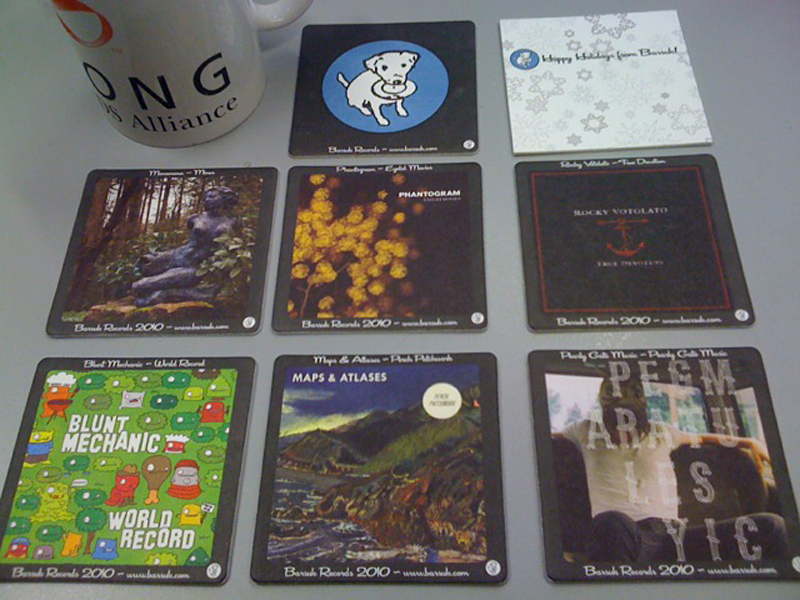Year-end list season, a time when music writers compile their favorite albums of 2010 (see ours), is also a time when the in-boxes of those in the music press become littered with notes from record labels and band handlers reminding us what records came out this year. It may seem odd, but it’s much appreciated.
A lot of albums came out in 2010. A lot of them sit in jewel cases on shelves around the office. Many more we never saw—we just clicked on a link and listened, either on a website or on iTunes. It would be easy to forget, for example, that Laura Veirs’ July Flame came out in January 2010, not December 2009.
Music fans, whose listening habits are undoubtedly more diverse than the sum of a bunch of critics’ year-end lists, could use a reminder, too. The downloads you buy get tucked into your iTunes library along with everything else you’ve stolen or sampled throughout the years. At first glance, nothing differentiates tracks that arrived in 2010 from those from 2008. There’s no visual cue to remind you how you reacted to a record, or when you bought it—whether it’s a new EP a friend sent last week or a gem you downloaded in 2006 and never listened to.
Seattle’s Barsuk Records used the U.S. Postal Service to send their reminders: coasters designed with the album art of each of their 2010 releases, from Blunt Mechanic’s World Record to Rocky Votolato’s True Devotion. These coasters will make their way into living rooms and hold drinks, and eventually somebody’s going to ask, “What does Pearly Gate Music sound like?” Unless the album’s playing, nobody’s ever going to ask about an mp3. If only the coasters came with a download code for the album. You might even be able to get someone to pay for such a thing.
Mp3s get about as much respect as Enrique Iglesias. Nobody holds them precious. Nobody collects them the way they do LPs or even CDs. And the disposability and intangibility of mp3s surely has contributed to the idea that the vessel and its contents have little or no value and can be taken for free.
One of the most interesting ideas we heard in 2010 regarding digital music distribution was the selling of the merch items (T-shirts, posters, keychains) that come with music, rather than selling digital files by themselves. Not that the idea is likely to be a panacea, but it pairs something people are used to paying for with something so many people do not. It also proves that record labels—notoriously stodgy and indifferent to change—are thinking outside the box.
Sure, Tooth & Nail or Barsuk probably aren’t going to put coasters on the market anytime soon. And designing Flatstock-worthy poster art for every new record may not be the recording industry’s life raft. But if we keep heading down this rabbit hole, surely a solution or two will stick.




